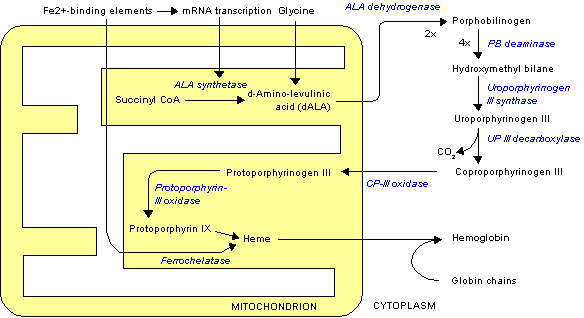WBR1007
| Author | [[PageAuthor::Vidit Bhargava, M.B.B.S [1]]] |
|---|---|
| Exam Type | ExamType::USMLE Step 2 CK |
| Main Category | |
| Sub Category | SubCategory::Dermatology |
| Prompt | [[Prompt::A 35 year old female presents with a 2 week history of sensitivity to sunlight. Whenever she steps outside unprotected she develops blistering, scarring, pigmentation on the back of her hands and face. She has also noticed increased hair growth at unusual places during these past 2 weeks. She is sexually active and takes oral contraceptives regularly. The physician orders the following labs:
Complete blood count:
LFT's
Urinalysis:
USG: Normal liver architecture The patient is diagnosed with an enzymatic defect in heme metabolism, which of the following represents the enzyme deficiency and the best treatment strategy for the same?]] |
| Answer A | [[AnswerA::Uroporphyrinogen III synthase Barrier protection from sun, activated charcoal & cholestyramine, avoid alcohol & high carbohydrate diet.]] |
| Answer A Explanation | [[AnswerAExp::The deficiency of the enzyme uroporphyrinogen III synthase leads to congenital erythropoietic porphyria (CEP)/Gunther's disease.
The three main symptoms that are present in patients with this disease are (1) abdominal pain and cramping (2) sensitivity to light that can cause rashes, scarring, and blistering, and (3) problems involving the nervous system and muscles that can produce seizures, mental disturbances, and damage to the nerves. Abdominal pain may sometimes occur with acute onset. Exposure to the sunlight can cause discomfort and result in blistering, consciousness of heat, and swelling and redness of the skin. After an attack urine can become a reddish or brown color. Some attacks can cause life-threatening issues to arise, such as low blood pressure, extreme electrolyte imbalances and shock. It is managed by all of the above mentioned recommendations.]] |
| Answer B | [[AnswerB::Uroporphyrinogen III decarboxylase Stop oral contraceptives, barrier sun protection, phlebotomy or Desferoxamine & Chloroquine.]] |
| Answer B Explanation | [[AnswerBExp::The deficiency of the enzyme uroporphyrinogen III decarboxylase leads to porphyria cutanea tarda, the most common porphyria subtype.
Patients present with photosensitivities in the form of blisters and erosions on commonly exposed areas of the skin. This is usually observed in the face, hands, forearms, and lower legs. Other skin manifestations like hyperpigmentation and hypertrichosis also occur. Chronic liver problems are extremely common, these include hepatic fibrosis (scarring of the liver), cirrhosis, and inflammation. Additionally, patients will often void a wine-red color urine with an increased concentration of uroporphyrin I due to their enzymatic deficiency. The treatment strategy involves eliminating excess heme from the body, as well as protecting against sunlight.]] |
| Answer C | [[AnswerC::Porphobilinogen deaminase High carbohydrate diet, Hematin/heme arginate, & removing offending agents.]] |
| Answer C Explanation | [[AnswerCExp::The deficiency of the enzyme porphobilinogen deaminase leads to acute intermittent porphyria.
Symptoms in AIP can be variable. They include:
Rash is not typically seen in AIP. Urine of AIP sufferers may turn dark purple when exposed to ultraviolet light and air after 24 hours of exposure. It is due to conversion of porphobilinogen to the dark colored porphobilin due to oxygen exposure. It is managed by above mentioned recommendations.]] |
| Answer D | [[AnswerD::Protoporphyrin III oxidase Asymptomatic doesn't require treatment.]] |
| Answer D Explanation | AnswerDExp:: |
| Answer E | [[AnswerE::ALA dehydrogenase Liver transplantation]] |
| Answer E Explanation | AnswerEExp::The deficiency of the enzyme ALA dehydrogenase leads to acute porphyria, it is managed by some physicians by liver transplantation. |
| Right Answer | RightAnswer::B |
| Explanation | [[Explanation::Shown below is an image representing heme synthesis.
Each of the enzyme deficiency in this pathway is associated with a specific metabolic disorder as described above. |
| Approved | Approved::No |
| Keyword | WBRKeyword::Porphyria, WBRKeyword::Heme |
| Linked Question | Linked:: |
| Order in Linked Questions | LinkedOrder:: |
